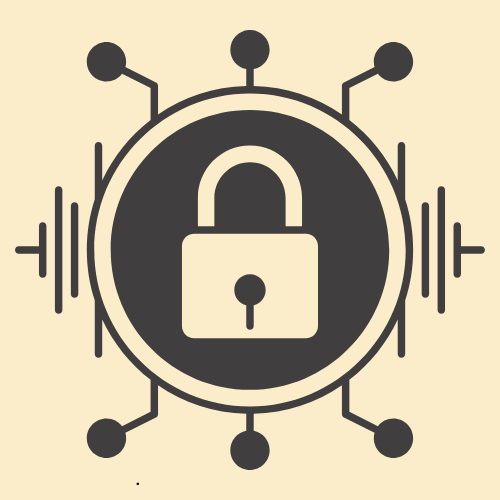A Guide To Cybersecurity Content Creation That Protects Your Audience

Over 70% of Americans are hesitant to share personal data with businesses, while 75% say they happily cut ties with brands after a cybersecurity breach.
For marketers and content creators, a serious commitment to cybersecurity builds much-needed trust and transparency with audiences—which in turn improves customer loyalty in the long-term.
In fact, companies that prioritize cybersecurity are more likely to boost their profits by 10% annually. So, there’s never been a better time to incorporate cybersecurity best practices into your content strategy.
Teach a proactive approach that uses real-world stories and avoids alarmist language—and you’ll successfully empower your audience to stay safe online.
Chapters
Teach a proactive (not reactive) approach

Known security flaws in software and devices increased by 30% last year. These flaws, called common vulnerabilities and exposures (CVEs), mean people are now at greater risk of cyberattacks. Your cybersecurity content should therefore take a proactive approach that helps your audience prevent known security vulnerabilities—rather than reactively teach them how to mitigate damage once a breach has already occurred. For example, educate your followers on the importance of regular software updates. As software updates patch known security vulnerabilities, cybercriminals can’t so easily exploit security weaknesses (and consequently access people’s devices or steal personal information). So, provide information on how to enable automatic software updates to protect against CVEs. Updates should be installed across operating systems, apps, web browsers, and antivirus software.
Raise phishing awareness
It’s also important to teach your audience to recognize (and therefore not fall victim to) the most common type of cybercrime: phishing. Phishing emails are designed to look like they’re from legitimate companies when they’re really not. The recipient is invited to click a link that leads to a professional-looking website where they’re prompted to enter either their personal details or financial information (or both)—which is then stolen.
Americans lose an average of $500 individually to phishing scams, sometimes with their personal details put up for sale on the dark web (where hackers run a massive criminal industry). People should be aware of these risks and understand how to keep their private information safe. So, teach readers to distinguish phishing emails from real ones. Highlight your official email addresses in your posts as part of this, so readers can more easily spot fraudsters impersonating your business. For example, if an email purports to be from your business (or any professional organization), but comes from a gmail or yahoo address? That’s a big red flag. Sometimes domain names may also be misspelled very slightly (amaz0n.com or amazorn.com instead of amazon.com, for example). Teach your audience to stay vigilant and watch out for these tricks.
Use real-world stories to hook readers

People relate to stories. Stories have the power to hook your audience on an emotional (as well as rational) level, which helps them better understand how the topic of cybersecurity applies to their own lives. Stories will also make your content easier and more likely to be remembered. In fact, past research has found that 63% of people remember stories, while, in comparison, just 5% remember statistics.
So, to incorporate relevant stories into your cybersecurity content, you could use high-profile examples of recent scams and how they impacted those who fell for them. This can give your readers a clearer picture of the very-real risks of poor cybersecurity, so they become interested in the issue of self-protection—which you can then teach them about. For example, the rise in fake, China-based designer stores is an ongoing problem people need to be aware of. Already, around 800,000 shoppers across the U.S. and Europe have been lured in by seemingly great deals on designer items. These shoppers made a purchase (which involved handing over their names, addresses, and financial details) only to never receive their orders. In most cases, no money was actually taken from their bank accounts. But, the criminals behind the scam now have access to their personal data.
Always wrap your stories up with what your readers can do to spot and avoid the same or similar scams in the future. If you need some help, StoryLab.ai’s blog outline generator can create solid outlines for posts that follow a storytelling structure. And, as these outlines can be easily customized, you can tweak them as needed until you’re completely happy with the results. You can then write engaging and educational posts that your readers will love in half the time.
Avoid alarmist language
If you rely on overly alarmist or sensational language to hook readers (along the lines of: “most people will be hacked sooner or later!”), your efforts are bound to backfire. Too much fear and negativity only makes people feel overwhelmed and helpless, and may potentially even scare your readers off for good. In fact, alarmist language has been found to trigger subconscious denial as a defense mechanism, which largely leads to inaction—and that’s not at all what you want. So, don’t downplay the risks of poor cybersecurity, but keep your content rational and calm with a focus on the practical steps readers can take to keep themselves safe.
Use a positive approach where possible — for example, “people who protect their accounts with multi-factor authentication (MFA) are 99% less likely to be hacked”. This is a real statistic from the Cybersecurity and Infrastructure Security Agency, so feel free to use it. As it places focus on the positive outcome of MFA implementation, it can uplift and empower your audience. Explain exactly how a specific action can benefit them, and your readers will be more likely to follow your suggestions.
With the potential for data breaches now a constant concern for many people, cybersecurity should be a priority for businesses and consumers alike. If you incorporate cybersecurity best practices into your content strategy, you’ll successfully help your audience keep their devices and data secure, and build a stronger, more trustworthy relationship with them in the process.
Other Interesting Articles
- AI LinkedIn Post Generator
- Gardening YouTube Video Idea Examples
- AI Agents for Gardening Companies
- Top AI Art Styles
- Pest Control YouTube Video Idea Examples
- Automotive Social Media Content Ideas
- AI Agent for Plumbing Business
- Plumber YouTube Video Idea Examples
- AI Agents for Pest Control Companies
- Electrician YouTube Video Idea Examples
- AI Agent for Electricians
- How Pest Control Companies Can Get More Leads
- AI Google Ads for Home Services
Master the Art of Video Marketing
AI-Powered Tools to Ideate, Optimize, and Amplify!
- Spark Creativity: Unleash the most effective video ideas, scripts, and engaging hooks with our AI Generators.
- Optimize Instantly: Elevate your YouTube presence by optimizing video Titles, Descriptions, and Tags in seconds.
- Amplify Your Reach: Effortlessly craft social media, email, and ad copy to maximize your video’s impact.